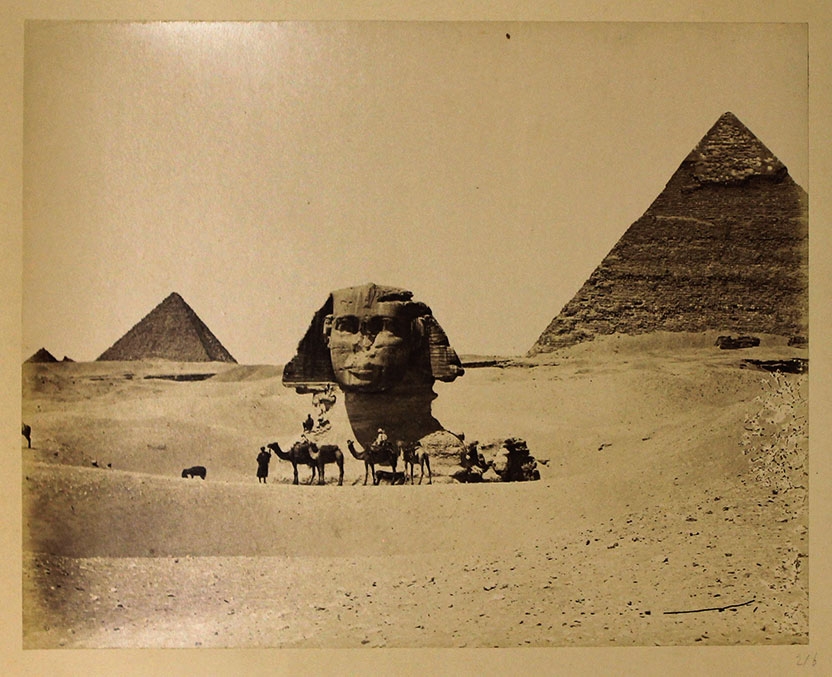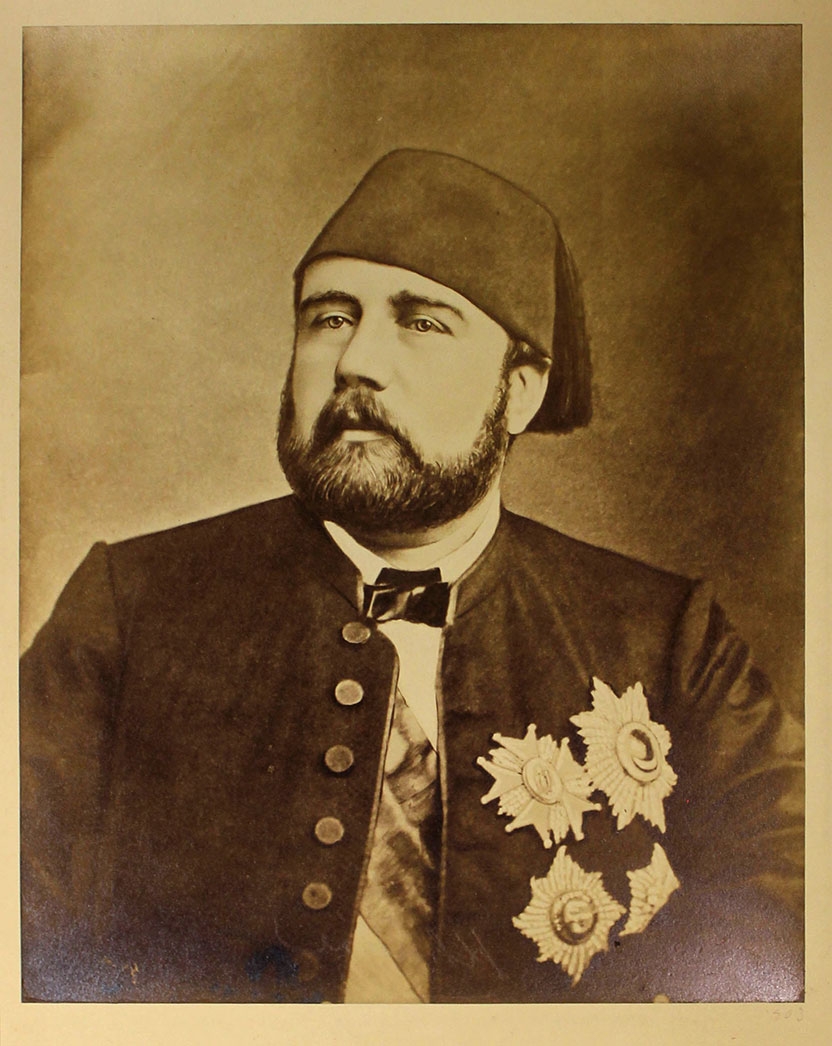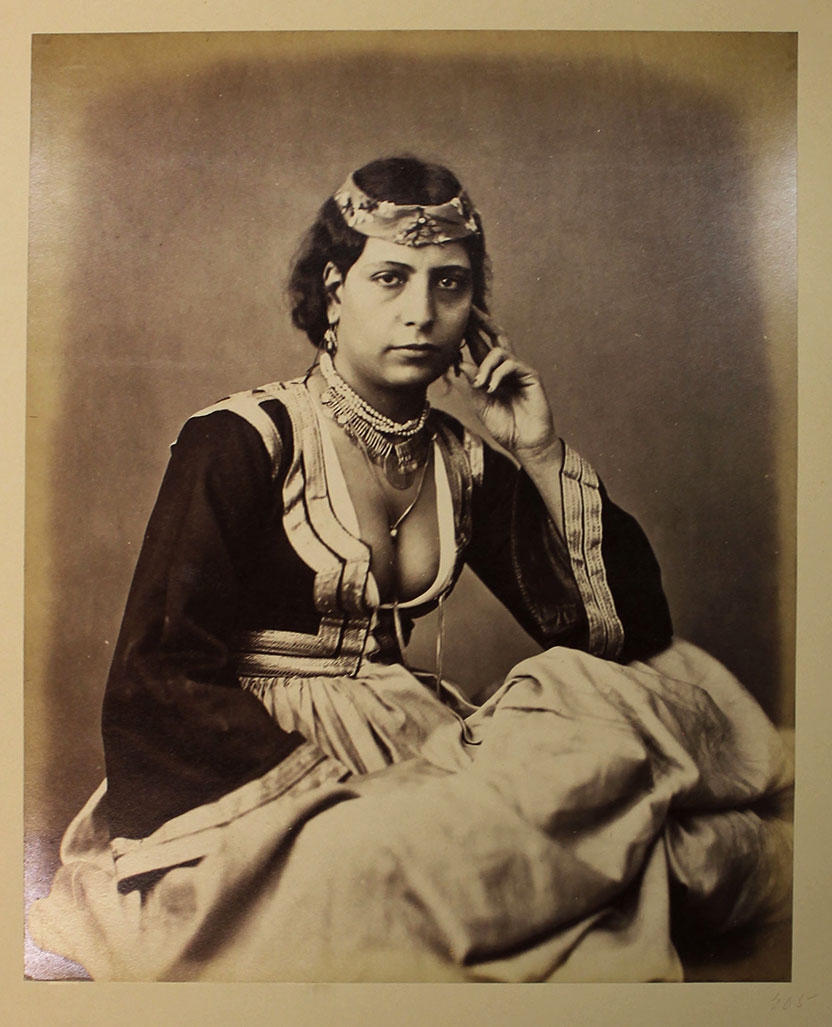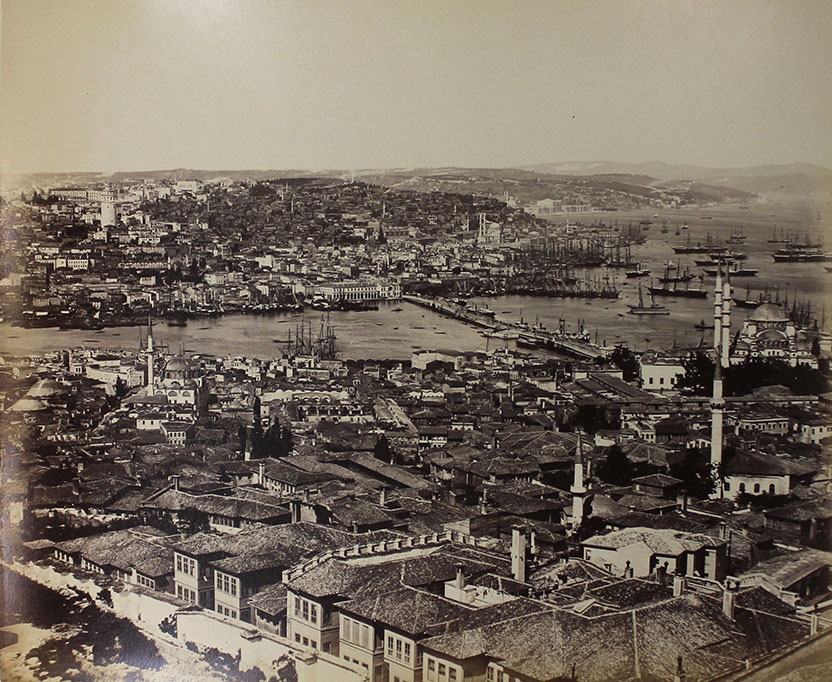The Light of the Levant: Early Photography and the Late Ottoman Empire
–
This exhibition highlights the important role of the Levant region in early photography. In its broadest historical meaning, the area of the Levant, controlled by the Ottoman Empire during all or part of the nineteenth century, encompassed contemporary Greece, Turkey, and most of the Arab world.

The region held a special role in the Euro-American imagination as a site of great antiquities, monumental architecture, religious importance, exotic otherness, and colonial ambitions. In addition, the region’s intense light rendered it a sought-out destination for many of photography’s earliest practitioners. As Louis Jacques Mandé Daguerre, the inventor of the earliest photographic technology, stated in 1839, “Nature’s image will reproduce itself still more quickly in countries where the light is more intense […]”
Organized into thematic sections that are chronologically arranged, the exhibition features photographs that trace a century of photography in the Levant, and documents the various scientific, commercial, ideological, and personal uses of the new medium. It begins in the early 1840s, when Joseph-Philibert Girault de Prangey set out from France to create a photographic study comparing western and eastern architecture. His daguerreotype of the Temple of Apollo at Didyma in modern-day Turkey, shown here, belongs to the very first photographic images ever taken at the site.

The next two sections feature photographs by local and foreign photographers. In the age of great European colonial ambition some, such as Auguste Salzman, traveled to the region on official government-sponsored trips. Others like Petros Moraites captured classical architecture and archeology to visually promote Greece’s recently regained national identity. By the middle of the nineteenth century, both foreign and local photographers began establishing studios throughout the region. Included here are some of the best-known studios, including Robertson and Beato, Dimitrios Konstantinou, Sébah and Joailler, and Félix Bonfils.

Special attention is also given to the Ottoman Empire’s official use of photography as a means through which to showcase its own modernity. Together, the photographs highlight a network of circulation in which images transported ideas about cultural otherness, imperial desires, and notions of modernity.



The invention of the Kodak Brownie camera in 1888 allowed tourists to the region to take their own snapshots, forcing the local photography studios to redirect their activities—and their cameras. A spectacular aerial photograph taken by Lehnert and Landrock, a studio in Cairo that exists to this day, features the pyramid complex at Giza taken from a German airship that visited Egypt in 1931. Broad panoramic views, sold folded up, found success as souvenirs that, back home, could supplement the tourists’ own photographs.
The exhibition concludes in the early 1930s with the popular postcard format, acquired as either a souvenir or sent home as an illustrated greeting card. Featured is the work of Palestinian Karimeh Abboud, who opened the first female-owned commercial studio in Nazareth, catering to local audiences and a growing tourist industry. Postcards accompanied the travel and tourism industry throughout the entire twentieth century and beyond, only to be overshadowed by travel images taken and sent from smartphones.
The exhibition is curated by Pieter Broucke, Associate Curator at the Museum and Professor of History of Art and Architecture, and Sarah Rogers, Professor of History of Art and Architecture. Works included are drawn from the rich collections at the Middlebury College Museum of Art and Special Collections at Middlebury’s Davis Library, as well as from private collections. Middlebury students in Professor Sarah Rogers’ course on “Orientalism and the Visual Arts,” taught in spring 2023, drafted labels for the exhibition, a selection of which are included on the object labels.
